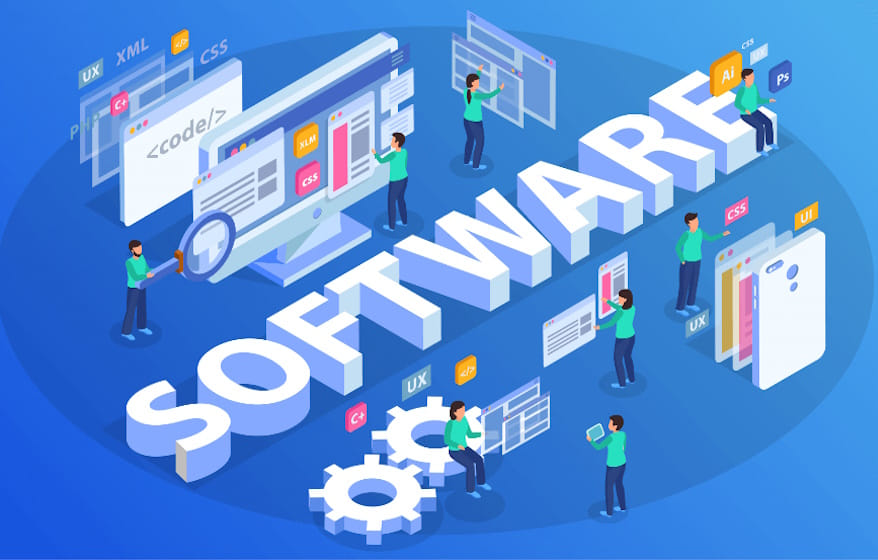Natural Language Processing (NLP) Summarized
Natural language processing (NLP) refers to the use of software to make sense and manipulate large quantum of data.
In that sense, writing NLP compliant content has become very much a part of the new generation SEO practices.
Though it sounds complicated, many bloggers and internet specialists have started to use such data to create content that would meet quality requirements of search engines and help their content be ranked high.
Since content is machine generated, NLP softwares help users achieve what cannot be done by a human hand alone. Such an outcome is made possible with the use of automation
Machine generated outcomes
NLP has wide range of uses, and scores over tradition process, since it helps users to achieve what cannot be done by a human alone. Such an outcome is made possible with the use of automation.
Automation has the ability to analyse and interpret large amounts of data fast and throw up results that normally human beings cannot.
Even large teams of people would struggle to manually process the huge volumes of data that NLP software can analyze effortlessly. For example, an NLP solution can quickly parse millions of customer support emails, social media posts, product reviews, and other sources to uncover trends
Processing and analysing large quantum of data in one go has many benefits, the most important being able to gleam more detailed insights which would not be possible when analysing small bits of data.
It’s Benefits
Speed and Efficiency: NLP algorithms work tirelessly at extremely high speeds to extract meaning, sentiment, and intent from language data. While a human analyst may need hours to carefully review a thousand emails, an NLP solution can process the same amount of data in seconds, resulting in saving time, energy and boosting productivity.
Accuracy: With deep learning advancements, NLP solutions are becoming increasingly accurate in deducing semantics, sentiment, and meaning from text and speech. Humans tend to be emotional. Even the most balanced analyst may not be able to rule out personal biasis creeping into processes and outcomes. Software scores over humans because of consistency and improves the quality of research.
Scalability: NLP software can be quickly scaled up and out to handle exponentially growing data volumes. Businesses can simply request more processing power, memory, storage space, or other capabilities from their cloud provider and have it made available on-demand. . By leveraging the economies of scale of major cloud platforms, businesses gain access to virtually unlimited scalable computing resources that can be provisioned almost instantly.
Cost Savings: By reducing the need for large manual language analysis teams, NLP software cuts costs substantially while improving output quality. As a result, skilled analysts are able to use time available at their disposal for things that machines can’t do–better interpretations of data.
Deeper Insights: While humans read language at the surface level, NLP dives deeper to extract context, subtext, concepts, semantics, sentiment, and meaning. This deep diving, undertaken at a granular level of text and speech reveals actionable outcomes which are valuable for users.
In short, the language providing abilities of an NLP software make it a a force multiplier for businesses and individuals, who are learn more from the same set of data which has been analysed by humans.
Important uses driving NLP Adoption:
Natural language processing (NLP) technologies are being utilized across a wide variety of industries to improve efficiency, insight, and customer experience. These industries include healthcare, financial services, retailm legal and media.
In healthcare, patient information from multiple sources including doctor’s notes and medical reports could be used to capture trends and anamolies to find changes in the profile of patients who come to a hospital.
In retail, it could be harnessed to analyse large quantum of unstructured, customer feedback data. Such analysis could throw up results that were missed out when done by humans. Based of such findings, a retailer could improve customer experiences, online and in brick-and-mortor stores.
Investment houses could use automation to analyse humungous amout of market data, based on which market sentiment and market direction could be predicted.
The legal industry, complex legal documents and contracts could be fed to the software to extract key findings. This would save time, but more important, usher in possibility of automating boring and repetitive tasks.

Media houses have large teams to generate information. However, even here, automation could be used to present information in a more reader and search engine friendly format.
Some key applications driving NLP adoption:
Customer Service: NLP chatbots can intelligently understand customer questions and handle routine queries and complaints, only escalating tricky or complex issues to human agents.
Business Intelligence: NLP software continuously analyzes industry news, financial reports, social media conversations, podcasts, earnings calls, and other text and voice data to reveal insights about competitor strategies, reputational threats, market opportunities, consumer trends, and more.
Process Automation: NLP automation tools extract key fields of data from documents like emails, forms, invoices, insurance claims, legal contracts, and more. This would save employees engaged in such tasks tons of time.
Search: NLP algorithms understand the context and intent behind search queries, not just keywords. Such a search is called a semantic search and could deliver more relevant results. NLP also powers conversational interfaces in voice search.
Healthcare: NLP software can extract medical history, symptomology, diagnoses, prescription information and other key data from patient health records, doctor’s notes, specialist reports, medical journals, clinical trial data, and insurance documents.
Fraud Detection: Analyzing customer communications across channels, NLP can identify warning patterns, anomalies, and subtle sentiment signals that may indicate fraud risk. NLP-enhanced fraud detection reduces losses.
Market Research: NLP tools mine customer feedback surveys, social media conversations, product forums, review sites, and other text data to understand brand sentiment, reception for new products, customer pain points, and perceptions of competitors. Companies could innovate based on these findings.
Core NLP Software Capabilities
Advanced NLP platforms include a robust set of technical capabilities to ingest, process, analyze, and generate insights from text and speech:

- Data Scraping: NLP solutions provide ready-made connectors, APIs, and tools to scrape and ingest the desired language data from sources like websites, social media, corporate databases, online forums, PDFs, emails, forms, and more.
- Noise Reduction: NLP employs techniques like spelling correction, lemmatization, and stemming to clean “noisy” language data by fixing typos, removing redundancies, and standardizing words to base dictionary forms. This makes analysis more accurate.
- Entity Recognition: NLP can identify and extract key entities within text such as people, organizations, locations, dates, times, monetary values, percentages, and more, helping organizations findcritical context.
- Syntax Analysis: Analyzing the linguistic structure of sentences, NLP can extract parts-of-speech, parse grammar conventions, and identify patterns to uncover the roles and relationships between words.
- Sentiment Analysis: NLP determines the prevailing emotional sentiment or attitude (positive, neutral, or negative) behind language.
- Semantics Analysis: NLP can deduce deeper meaning from text by evaluating word definitions, metaphors, ambiguities, idioms, cultural references, slang, sarcasm, and context.
- Summarization: NLP summarization algorithms can generate concise, shortened summaries of documents, text, and speech while retaining key points and overall meaning.
- Translation: Advanced NLP translation capabilities allow accurate translation of text, speech, and documents between over 100 global languages.
- Conversation Management: NLP powers conversational interfaces like chatbots by interpreting user queries, generating natural responses, and guiding conversations.
With the NLP market booming, hundreds of tools are available. Here are crucial factors businesses should consider when evaluating options:
Choosing the Right NLP Software

- Intended Use Cases: Prioritize NLP solutions purpose-built for your specific applications and industry. Experts know that customized tools deliver focused benefit and are better than general-purpose tools.
- Supported Languages: Ensure the NLP software can process all dialects, slang, and locales your business handles. Localization helps global businesses to be accepted better.
- Accuracy: Test NLP accuracy at deducing meaning, sentiment, and entities from your sample data. Compare error rates across tools. Higher accuracy reduces manual review needs.
- Cloud vs. On-Premise: Cloud NLP simplifies deployment with scalability and availability benefits. On-premise allows tighter security controls and customization. Compare costs, control needs, and hardware requirements.
- Development Platform: If building custom NLP solutions, ensure tight integration with your preferred coding languages (Python, R, Java etc.) and existing development tools. Prioritize open-source options.
- Pricing: Balance subscription costs or per-usage charges against your budget. Confirm adequate processing capacity is included for your needs.
- Scalability: Evaluate ability to smoothly scale up processing power and data capacity on-demand to meet spikes in usage. Lack of scalability creates bottlenecks.
- Vendor Profile: Seek NLP vendors with a solid track record of innovation, client success, robust security, and excellent technical support. Avoid fly-by-night options.
- Ease of Use: Even powerful NLP requires some training. Prioritize understandable interfaces and workflows to reduce the learning curve for users.
FAQ: NLP for Dummies
An NLP project's lifecycle comprises of data collection, data preparation, feature engineering, model training, model evaluation, and deployment.
NLP can be used by bloggers in multiple ways.
- Bloggers could use sentiment analysis to assess comments on social media and see how their brand is performing.
- They could use NLP to automatically generate summaries of their blog posts
- They could create chatbots for customer support.
- NLP could help bloggers improve the accuracy and efficiency of their documentation, making it easier for them to interact with their readers by enabling computers to understand human language.
NLP can be beneficial for content marketing in several ways. For example, it can help content marketers gain a deeper, nuanced, and multilayered understanding of raw natural language inputs
NLP can also empower programs and machines to understand human language fed to it better, making it easier for marketers to create content that resonates with their target audience
NLP can also be used to automatically generate summaries of larger, more complex original texts, which can save content marketers time and effort
Finally, NLP can help content marketers improve the accuracy and efficiency of their documentation,

